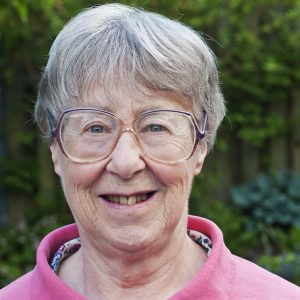By Philippa Kiraly, Special to the Sybaritic Singer
A few weeks ago, Seattle Symphony opened its new venue: Octave 9: Raisbeck Music Center, where the Symphony’s mission is to broaden and expand our concept of what constitutes music and encourage and support new and venturous ideas. State of the art technology makes it possible to create an immersive surround-sound, multi-sensory experience, a traditional chamber music ambiance or an education center plus more, in a space which might hold 75 seats max but where people can also sit on windowsills and the floor and have a drink or snack. No need to dress up!
Tuesday night saw a sold-out concert of compositions by Trimpin, Andrew Stiefel, Steve Reich, Ravel (in arrangement), and Leonardo Gorosito, and Rafael Alberto, but for some, part of this might have stretched the traditional concept of what “music” is. However, in Merriam-Webster’s dictionary, it says “Definition of music. 1a : the science or art of ordering tones or sounds in succession, in combination, and in temporal relationships to produce a composition having unity and continuity.” (The second definition is more what many understand as a more traditional ordering of melody, rhythm and harmony.)

The performance was engrossing on all fronts. It began with a Trimpin work, Solo Flute, Eight Pottery Wheels and Assorted Vinyls. Flutist Paul Taub, who has for years embraced the widest of musical experiences and achievements with his flute, was an excellent choice to play the live instrumental part, using four different sizes of instrument, from piccolo and orchestral flute to alto and bass. Most of his playing comprised blowing soft rhythmic sounds, mostly disjointed, varied in style, even a section where he sounded like dog barks, whines, growls, yips. All through he was part of a sound installation which included as the title says, six small pottery wheels supporting tiny turntables each with a vinyl record on it and horns for sound. With the wheels Trimpin could manipulate speed, volume and pitch of each, playing one or several at a time and some speaking, some with musical sounds. The directions for Taub’s playing were projected on the wall, more like a colorful, illustrated diagram than a score many musicians would recognize.
Before the performance, Trimpin, who won a MacArthur Genius Award in 1997, gave a description of what we were about to hear and the result was an absorbing experience.
Andrew Stiefel, a member of the new music group Sound of Late and now on staff at the Seattle Symphony, brought his piece Five Ways to Listen to a Mockingbird for flute (Jeffrey Barker), clarinet (Laura DeLuca) and bassoon (Dana Jackson), all SSO members. First, he described the ubiquitous sound of the mockingbird as he knew it from living in Texas—a bird which is always singing but never its own original song, always imitated sound not just from other birds but car horns, train whistles, industrial sounds and more, and always in fragments. In five movements, the work evoked dawn to night as a mockingbird might sing it. All three instrumentalists used many of the same techniques Taub did earlier, but with snatches of melody as well. Softly underlying them was the sound of a stream bubbling over rocks and later the night sound of cicadas. At first it was hard to figure out where that was coming from until it became clear it had to be recorded. The whole was peaceful to hear, almost lulling to the senses.
Lastly, the percussion Arx Duo played Steve Reich’s Nagoya Marimbas, the two performers, Mari Yoshinaga and Garrett Arney, in exact synchronization with each other and creating the hypnotic, minimalist shifts in waves of color and sound that are a Reich hallmark. They continued with Seeds, by Brazilian composers Leonardo Gorosito and Rafael Alberto, in which they used a tableful of seed containers—tiny baskets each with different seeds and material at the base, rattles, shakers of all sizes and kinds, plus tiny Chinese bells and small cymbals, together creating a totally different musical experience with the many timbres and pitches of the seeds as shaken in their containers. It was a deeply rhythmic piece encompassing many changes and twists of tempo, rhythm and intensity with the two performers again so perfectly together that they might have been two halves of one.
Lastly, ending the concert, they played a skilled and sensitivite arrangement for two marimbas by the Safri Duo and performed the same way, of Ravel’s Alborada del Gracioso.
The concert, with no intermission lasted 90 minutes with time after for performers and enthusiastic audience to mix, talk, and check out the instruments.
 Philippa Kiraly has writing classical music criticism since 1980, for several newspapers in northern Ohio and Seattle, magazines, both local and national, and blogs. She is passionate about the importance of independent criticism for the fine arts, an art in itself which is dying with little interest by many publications and no longer a viable career for most. But writing for tickets is always worthwhile!
Philippa Kiraly has writing classical music criticism since 1980, for several newspapers in northern Ohio and Seattle, magazines, both local and national, and blogs. She is passionate about the importance of independent criticism for the fine arts, an art in itself which is dying with little interest by many publications and no longer a viable career for most. But writing for tickets is always worthwhile!
Pippa is a keen gardener, a keen grandparent, and can get lost in a good book.
